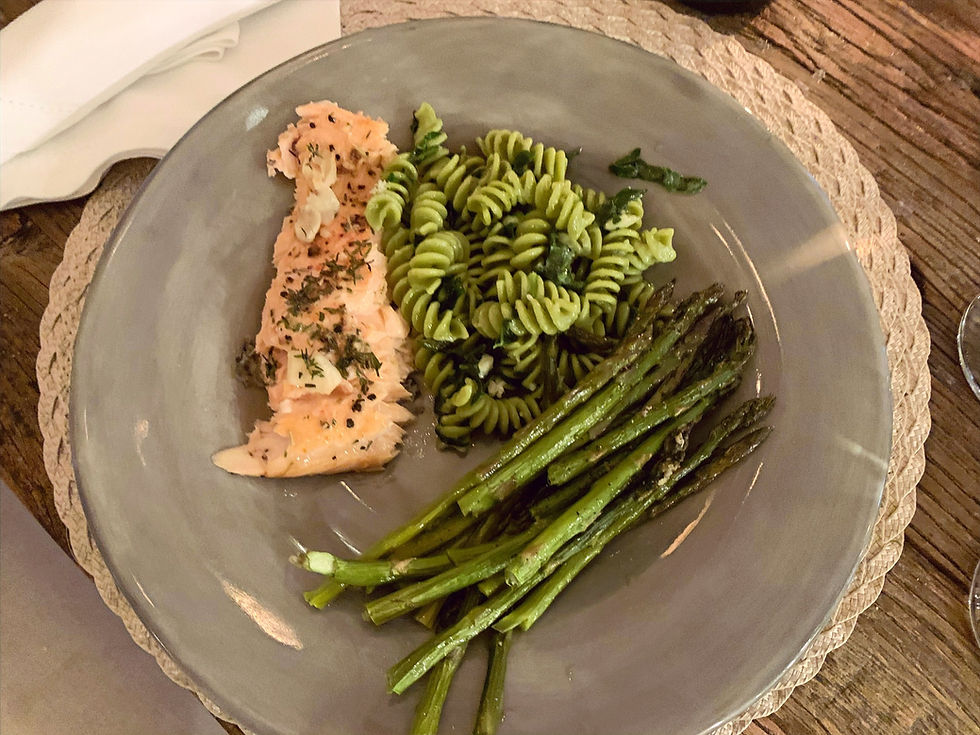Return to Art
- Jim Hoehn

- Jun 19, 2020
- 4 min read
Everyone is Born an Artist
We are all born artists, creators and makers. Give any child a crayon and paper and they will create. Play a song and they will dance and sing. Buy them a fairy tale outfit and they will act out a scene. Give a kid a piece of chalk outside and they will draw. As we get older, it’s amazing how many of us come to think we are “bad” at drawing and painting, acting and singing or even sculpting, but as kids we instinctively knew how to form clay in our hands, and it felt great. Tiny ashtrays on parents’ desks were proof.
Artistic expression thrived in some of us, but for most the drive to create was drilled out to instead focus on careers of business. Over time we forgot what we could do with our hands and eyes and voices. Yes, we were creative in business and as we cooked or decorated our homes and gardens, but, we were no longer filled with the awe we once experienced when making stick figures, singing and dancing or drawing our pet dogs and cats. People would see me doodling in meetings and ask what I had been drawing. If it was a bad meeting, there were a lot of dark bolt-of-lightening-type markings or caricatures with cigarettes hanging from their lips. If the meeting turned into something productive, I would subconsciously draw flowers and animals with curved lines. Artistic expression was still present.
A Scientist Can Be an Artist Too?
In my mid-40s, I ran into a colleague painting in watercolors on the C&O Canal here in Maryland. I was surprised that this geologist was also quite artistically talented. I was well into my government career at this point, but this encounter inspired me to know how he learned to paint so well. After reading Drawing on the Right Side of the Brain, by Betty Edwards, he took a class based on the book’s theory, which gave him enough confidence to begin painting on his own.
First Step is Starting. Second Step is Learning from Others
Running into my colleague that day decades ago was serendipitous and it nagged me for years. It wasn’t until my 50s that I decided to explore the artistic side that had been drilled out long ago but was still below the surface. A single painting class was the first step, which led to the next. I picked up techniques, talked to the instructors and other students and gained the confidence to sign up for more classes.
The big turning point was joining an art collective, where I painted every day in a studio space made up of 70 artists who were making incredible art in all mediums. I used the opportunity to talk to my new neighbors and ask questions, take classes in different types of art and learn from everyone. Many of the artists had been formally trained at art school, and they could not have been kinder or more helpful. Others had similar experiences to mine and were returning to art many decades later. The returning artists watched in amazement at how our daily practice and interactions with the master artists led us to become better. This was our art schooling. A willingness to explore, listen and learn opened up a new world, and it was full of the most talented people I’ve ever met, who generously shared their feedback and advice.
A few years later, I was asked by the fantastic painter Cathy Hirsh to join Gallery 209 and what fun that has been! I have always taken advantage of opportunities to show my art, talk about art and meet new artists. Every conversation with a fellow artist led to learning something new. Cecelia Laurendeau creates wonderful detailed paintings with palette knives (try it sometime!) and she inspired me to try different styles. A great painter and sculptor, Elizabeth Steel, as well as Elizabeth Stecher, a world-class painter of miniatures, always were willing to listen and share their knowledge.
Paint Because You Enjoy it, Plain and Simple
Mark Kielkucki is a great painter in Kansas City. He taught me an important lesson: you paint because you have to; it’s like eating or breathing. The real goal is to paint, create and laugh. The goal is never to sell a painting, although it is exciting when that happens. I’ve tried to live by this lesson since returning to art. There have been unanticipated rewards along the way, such as being part of art shows. The shows never yield much money but surprisingly there have been quite a few sales. Most important, it’s been fun and I get to meet new artists.
If stuck, I reread Julia Cameron’s, The Artist’s Way, which brings me back to the purpose and goal of painting for the sake of painting and art for the sake of art. The book, The French Art of Not Giving a Sh*t; Cut the Crap and Live Your Life by Fabrice Midal, was pivotal in changing what I believed was the chief obstacle to start painting: time. Much of what we believe is important to fill our days can be shifted so that there is time and energy for art.
All of this is to say returning to your art and creativity is a community endeavor: you need to engage with fellow artists and involve your family. My kids, grandkids, siblings, former colleagues and friends come to the art shows and show their support, for which I’m very grateful. Mary Ann keeps me optimistic about my post-Covid-19 art endeavors. So, pick up a pencil or a crayon or a paint brush and, like you did as a child, create and laugh…a lot!



Comments